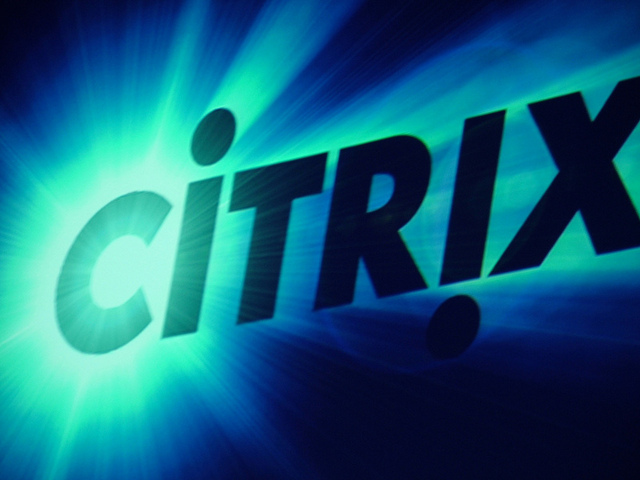
Citrix is touting new technology to make the up-front cost of virtual desktops cheaper for businesses than physical desktops within six months, while ensuring that virtual desktop performance doesn’t lag too far behind traditional PCs. While advances in XenDesktop software and the ability to pack ever more virtual desktops onto a single server factor into the equation, a key piece is a new partnership with virtual desktop software vendor NComputing and hardware vendor Texas Instruments to create a system-on-a-chip architecture that incorporates Citrix’s own HDX high-definition virtual desktop technology directly into the silicon.
The first devices using HDX system-on-a-chip technology will be sold in early 2012, and will eventually lead to client devices that cost less than $100, Citrix claims.
“For the first time ever, nontraditional devices like network monitors, phones, smart keyboards, consumer set-top boxes, shop floor equipment, kiosks and hospital workstations-on-wheels will be able to display virtual apps and desktops directly, without the need for an a full PC at the endpoint,” Citrix said.
The HDX system-on-a-chip architecture is initially designed for ARM-based chips but will be expanded to x86. To enable access to virtual desktops, these devices would connect to customer data centers outfitted with Citrix’s XenApp and XenDesktop software. Citrix says the average first year cost for deploying physical desktops in a business setting is roughly $1,000 per device, and that virtual desktops are on the verge of dropping below that mark and will continue to decline in price while physical desktops stay steady.
Vendors have been touting the benefits of virtual desktops for years, and Citrix is effectively now saying that the reality is going to finally live up to the hype. Other factors include advances in WAN optimization and storage systems tailored for virtual desktops. Of course, Citrix’s price calculations probably assume that customers will use XenServer to host virtual desktops. In practice, most customers use the more expensive VMware to virtualize their servers, perhaps driving up the average price. In response to a question from Ars, Citrix marketing executive John Fanelli says "For the optimal cost savings, we recommend XenServer however, the overarching trend of virtual desktops decreasing faster than PC costs decreasing still holds true in a VMware environment." This is because of servers become more scalable and cost-effective, and new storage technologies like deduplication and thin provisioning, Fanelli says.
Citrix's prediction of lower-cost virtual desktops also depends on adoption of HDX-ready system-on-a-chip devices, which have not yet been shown in detail. But Citrix may reveal more this week at its Synergy conference in Barcelona, and additional hardware vendors like HP and Dell have indicated interest in the new HDX systems.
Citrix is making several more announcements this week at Synergy. Citrix today explained how it will integrate the recently acquired ShareFile into GoToMeeting and Citrix Receiver for iPad, and announced a new acquisition of application migration vendor App-DNA.
Citrix earlier this month closed the acquisition of ShareFile, a DropBox-like technology that Citrix says is more appropriate for business use and sharing, rather than just storing, of documents. ShareFile will be integrated into GoToMeeting in the first half of 2012 as part of a Workspaces feature that brings file sharing and tools for having discussions around files into a Web-based meeting system that already includes screen sharing and audio and video.
ShareFile is also being combined with Receiver, which brings remote access to virtual desktops and applications to a variety of devices including the iPad. This capability, available at the end of this year in a technology preview, will make it easier to view and edit business documents from the iPad while preserving IT’s ability to remotely wipe the device. Receiver is available on multiple mobile devices, but Citrix’s press demo showed only the iPad. The same technology will presumably work with Receiver for iPhone, Android and Chrome.
Citrix’s acquisition of App-DNA, revealed today and expected to close before the year is over, will help customers perform physical-to-virtual migrations and move existing applications to new versions of operating systems and browsers, Citrix said. Citrix also previewed the first Citrix-branded release of CloudStack, an infrastructure-as-a-service software product acquired by Citrix when it bought Cloud.com. While CloudStack will continue to support multiple hypervisors including Hyper-V, vSphere and KVM, there will be an optimized version of XenServer for CloudStack that Citrix says will bring “new levels of scale, manageability, security, multi-tenancy, and virtual switching integration.”
Citrix has been praised by analysts for building out a comprehensive set of technologies for delivering virtual desktops and applications to many types of devices, but still lags far behind rival VMware in the server virtualization market. Citrix hopes the success of Xen in building cloud networks, such as the Xen-based Amazon EC2 and Rackspace Cloud, will help bring the Xen hypervisor to a broader market. Giving preference to XenServer in CloudStack is a step in that direction, but Citrix is still more open to competing virtualization platforms than VMware, whose products support only its own vSphere technology.
Citrix has several more announcements this week beyond what we’ve already discussed. A new product called NetScaler CloudConnector for CDN is offered in partnership with service provider Cotendo, and will reduce network bandwidth requirements while accelerating delivery of mobile, Web and software-as-a-service applications with TCP optimization, data compression and deduplication. Citrix also announced a new virtual desktop initiative for small- and medium-sized businesses.
Listing image by Photograph by Irish Typepad
reader comments
45